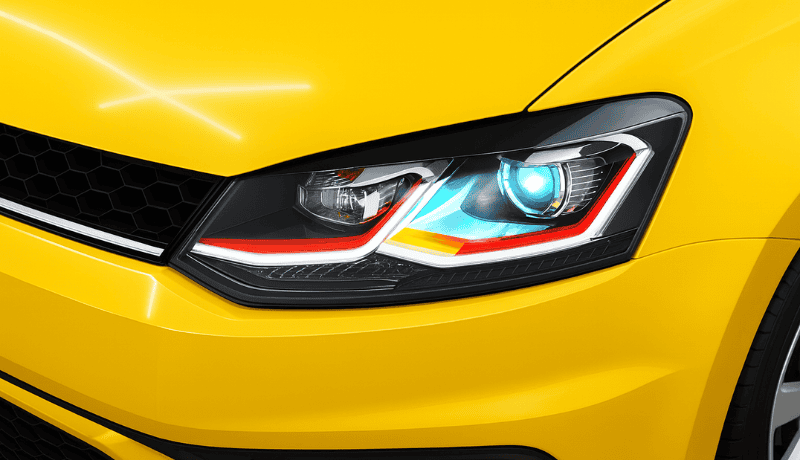LED headlights are the go-to solution for drivers who want better illumination on the road today. These types of headlights are even becoming standard in new vehicles. Unfortunately, LED lights can also create more glare for oncoming vehicles.
Getting rid of LED headlights is not a realistic solution to this problem. Car makers, LED bulb manufacturers, and drivers have already found ways of reducing glare from these headlights.
For the sake of every driver on the road at some point at night, we’ll be looking at effective measures we can take to reduce the glare from our LED headlights. From simple adjustments to adaptive headlight systems, you will find out why solving glare is as simple as ever.
Understanding LED Headlight Glare
Before we discuss how headlight glare can be reduced, it’s important to understand what lens glare is and why it’s a major issue with LED headlights.
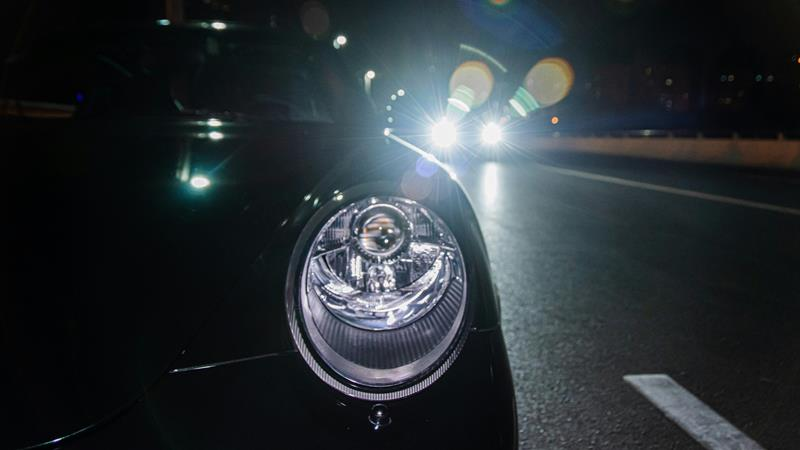
What is Headlight Glare?
Headlight glare is the light from a vehicle’s headlamps that ends up in the eyeline of other drivers. When glare is minimal, other drivers barely notice it. It becomes a problem when the amount of light in other drivers’ eyes is enough to dazzle or temporarily blind them.
When the eyes are subjected to a bright light, they won’t be able to see much of anything else. A driver may not spot pedestrians and other hazards if there is a bright oncoming light in their eyes or if the light from the headlights behind them or approaching vehicles is reflected off their mirrors and into their eyes.
This blinding effect persists after half of the light has passed, worsening the problem. Traditionally, the glare problem has been addressed by using the low-beam setting. Unfortunately, this is no longer as effective as it once was.
How Do LED Lights Make Glare Worse?
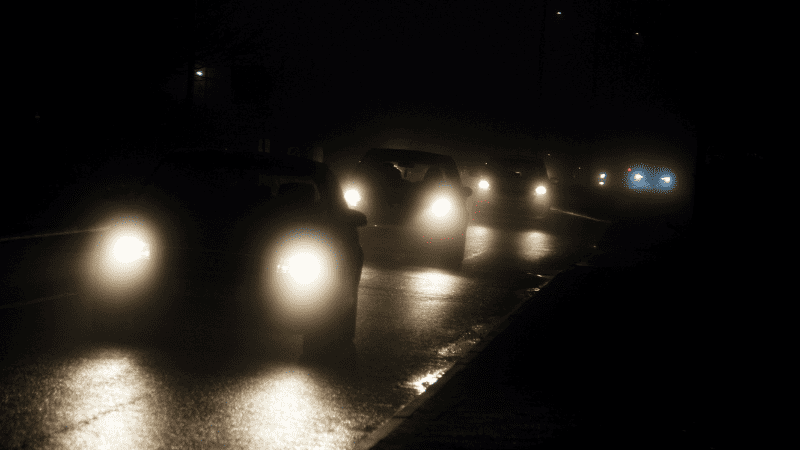
LED headlights are significantly brighter than traditional halogen headlights. This alone means they can cause more glare. However, several factors have contributed to making the issue worse with LED headlights. These include:
- Human eyes seem to be more sensitive to the cooler color temperatures common in LED headlights.
- Some drivers use LED headlight bulbs that are incompatible with their existing headlight housings.
- The adoption rate of LED headlights has been high thanks to their light output and durability.
- LED headlight bulb designs currently lack universal standardization.
However, the increase in glare during night driving isn’t because of LED lights only. Xenon lights are also bright and have cool color temperatures. Secondly, the headlights in certain types of cars are higher today than when some regulations were drafted. The latter is especially significant.
The Importance of Proper Headlight Adjustment
Properly adjusting headlights is a simple solution that can significantly reduce the glare caused by any type of headlight. According to a research team at the Light and Health Research Center, most cars on US roads have at least one misaligned headlight.
A misaligned headlight means the light beam is pointing too high or too low. A headlight whose high beam is pointed too high up is more likely to be in the eye-line of oncoming drivers or reflect off the rearview mirror of the driver ahead. This is why the low beams are aimed downward.
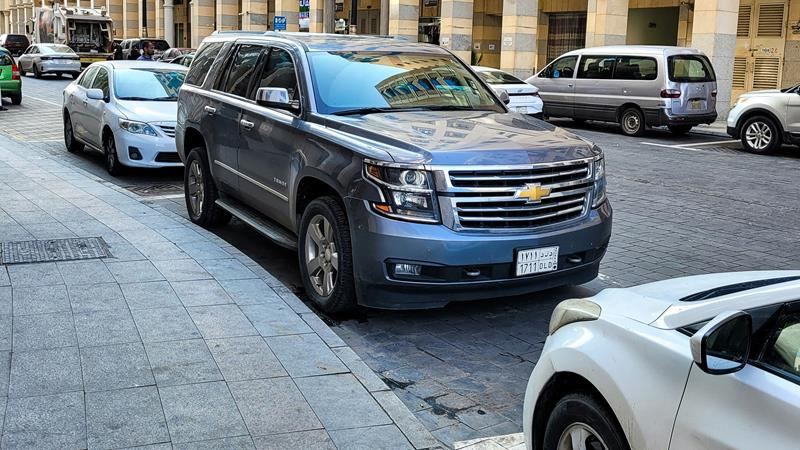
The taller pickup trucks and SUVs on the road today worsen this problem. These vehicles’ headlights are higher up and more likely to cause glare to lower-mounted cars ahead of them or going in the opposite direction.
It is good practice for car owners to check that all front-facing lights are properly aimed regularly.
Advancements in Anti-Glare Technology
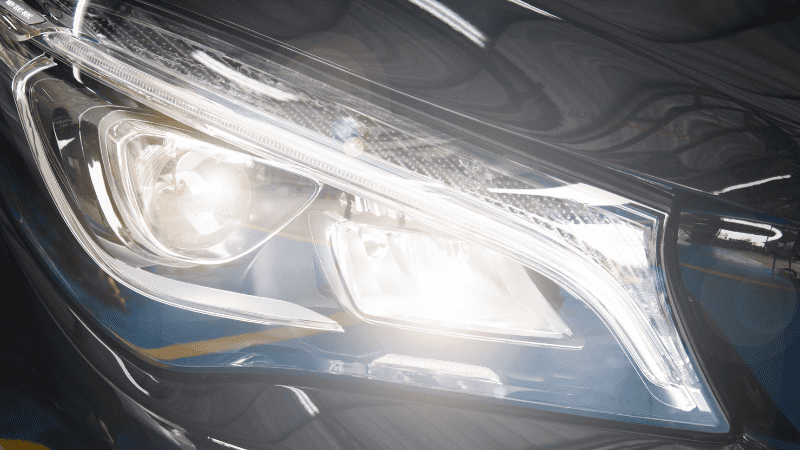
Some solutions to the excessive glare problem on roads are not in the cars. Anti-glare screens are boards put up between opposing traffic lanes to block the light from headlights.
Anti-glare technology has come a long way and there have been studies that can help to determine the heights and spacing of these barriers to make them more effective at shielding the drivers’ eyes from oncoming traffic from bright headlights.
These boards offer a good solution to glare on high-speed highway sections where drivers will be more likely to have their high beams on. However, anti-glare boards won’t keep you from dazzling the drivers ahead of you.
Adaptive Headlight Systems
Adaptive headlight systems are arguably the best of currently available solutions to excessive glare. They have the potential to make glare a non-issue but their impact on safety goes beyond that.
How Adaptive Headlights Solve Glare
Modern adaptive headlight systems that use LEDs can shade other cars by cutting out parts of the beam. This is possible because these headlights consist of multiple individual light sources (LEDs or micro LEDs) that can be individually turned on or off, or dimmed.
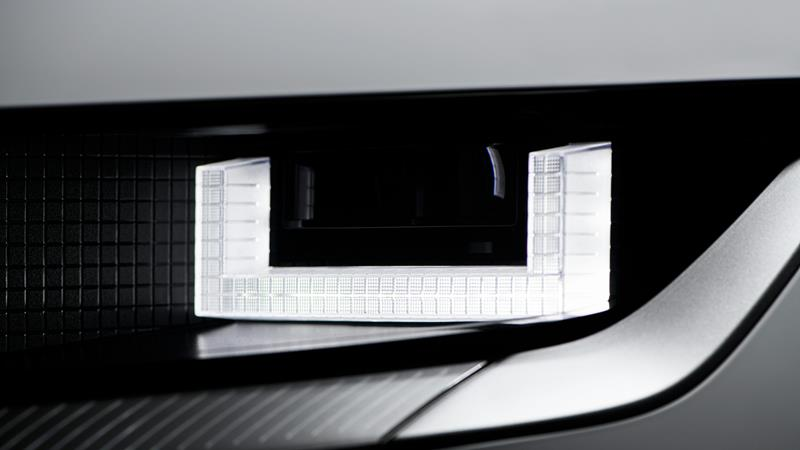
LED adaptive headlights are paired with cameras and computers and can detect and actively track the positions of other cars. The LEDs in the headlights are dynamically controlled to keep the moving cars in a shaded part of the beam.
The best part of the adaptive driving beam is that the remaining LEDs can be kept at full brightness. This enables drivers to get around with maximum illumination without being a nuisance to other cars.
Adoption of Adaptive Headlight Systems
Despite the immense potential of adaptive headlights, they are yet to become the standard headlight systems on many roads. The reasons for this include:
- Cost: Adaptive headlight systems are fairly new and, for many vehicle models, are only available as a premium upgrade if at all.
- Legislation: In countries such as the US, the introduction of adaptive headlight systems was long held back by outdated legislation. Recently introduced legislation that allowed the use of adaptive headlights also placed standards that couldn’t be met by existing adaptive headlight systems.
- Compatibility: Getting adaptive headlights requires more than new headlights. They are supported by a complex system consisting of cameras, sensors, and computers. This makes them less compatible with the older vehicles already on the road.
Choosing High-Quality LED Bulbs
Many auto lighting enthusiasts will tell you that if your headlights are causing glare, there’s a good chance a low-quality LED bulb is behind it.
The Problem With Low-Quality LED Bulbs
Headlight housings are designed around specific types of light sources. The size of the light source, the spread of light from the source to reflectors, and the distance of the source from the base of the bulb all determine the amount of light cast and the direction of the light beam.
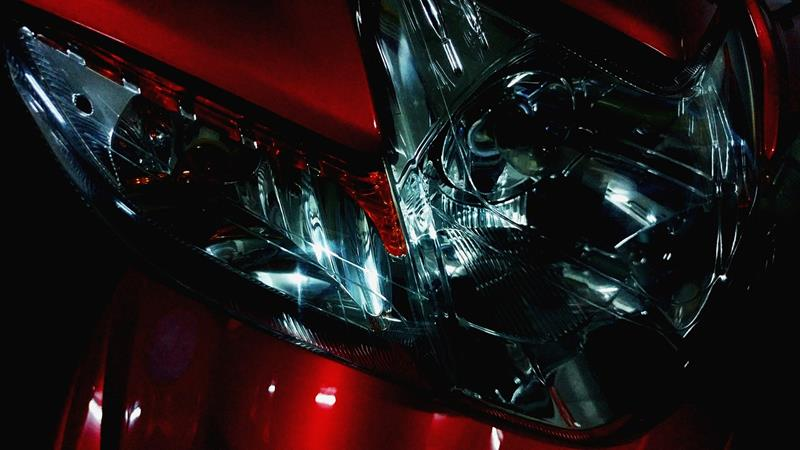
Low-quality LED bulbs are not good replacements for traditional filament bulbs. They can produce a light beam pattern that causes glare even in low beam mode.
How to Find High-Quality LED Bulbs
In new cars, good-quality manufacturing ensures optimal headlight performance and durability. In older cars, it ensures maximum compatibility so an LED bulb can easily replace a halogen.
Getting a good-quality bulb requires collaboration with a manufacturer such as Carlightvision. The best quality bulbs are made for and tested in specific headlight systems and car models.
Maintenance Tips to Reduce Glare
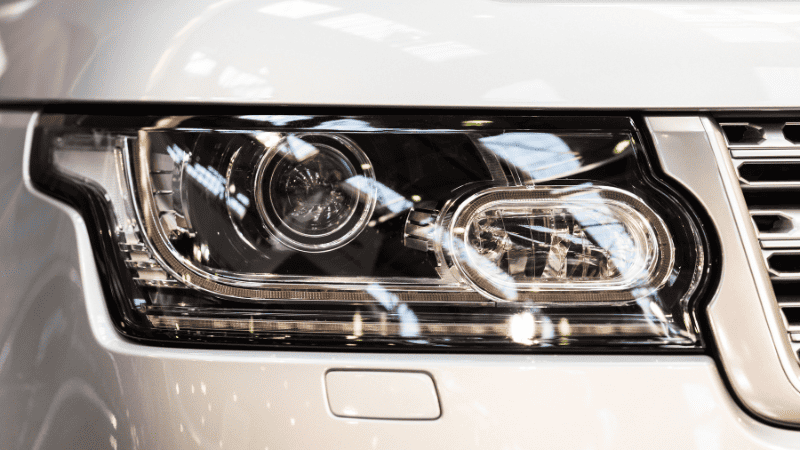
Some causes of glare can be reduced or eliminated with some regular maintenance. This can reduce both the glare from your headlight and the glare from oncoming headlights. Some maintenance tips you can employ are:
- Clean Your Headlights: Debris, snow, condensation, etc. can cause irregular dispersion of light from your headlights. Regularly clean the headlight glass to prevent this.
- Check Your Headlight Aim: As explained above, poorly aimed headlights are a major cause of glare. You can take your headlights to be checked by a professional or follow this handy guide to do it yourself.
- Clean Your Windows and Mirrors: Ice, snow, debris, etc. on your windows and windshield can also disperse light from other headlights into your eyes. Ensure these are regularly cleaned.
- Check for cracks: Cracks on glass surfaces also cause irregular dispersion of light. Check your headlights and windshield for cracks and have them fixed or replaced.
- Adjust Your Mirrors: When your side-view mirrors are properly adjusted, they are less likely to reflect light from the car behind you into your eyes.
Conclusion
Excessive glare has become a common problem during night driving, but the issue is solvable. Simple interventions such as ensuring headlights are properly cleaned and aimed will make a major difference. Anti-glare screens also help to cut down glare from oncoming cars.
Adopting high-quality LED bulbs will help reduce the share of glare caused by LED headlights. However, adaptive headlight systems are currently the most promising solution for this problem, especially if the right laws are passed and implemented.
Partner with Carlightvision for High-Quality Low-Glare LED Bulbs
Carlightvision offers high-quality, low-glare LED headlight bulbs for OEMs/ODMs and aftermarket distributors. Our motto is ‘Illuminate with Beauty, Shine with Friendliness’.
We have over 15 years of LED bulb manufacturing experience and we know how to design headlight bulbs that produce minimal glare. We aim to offer lighting that improves illumination without endangering other vehicles and road users. Visit our products page to find out more about our solutions. Inquire today to get an immediate quote!




